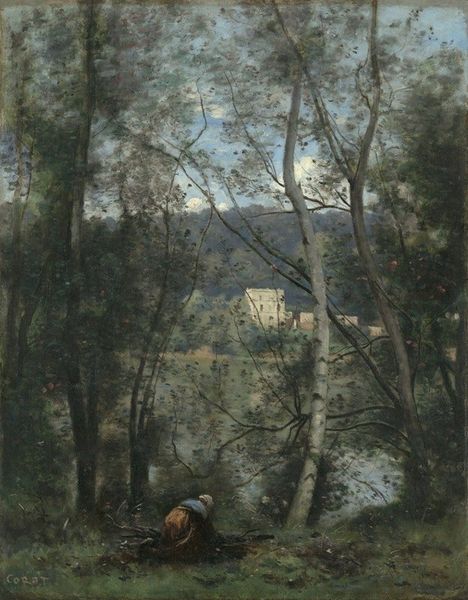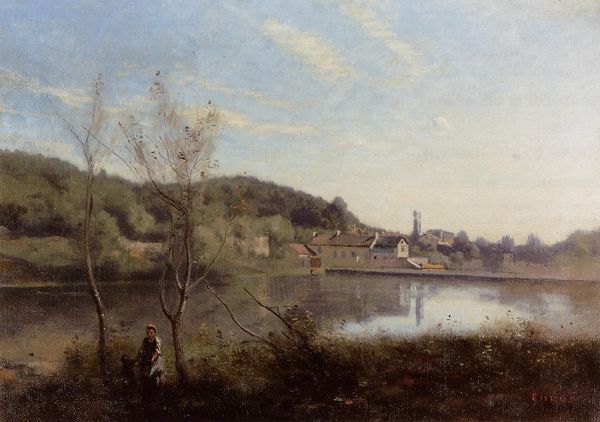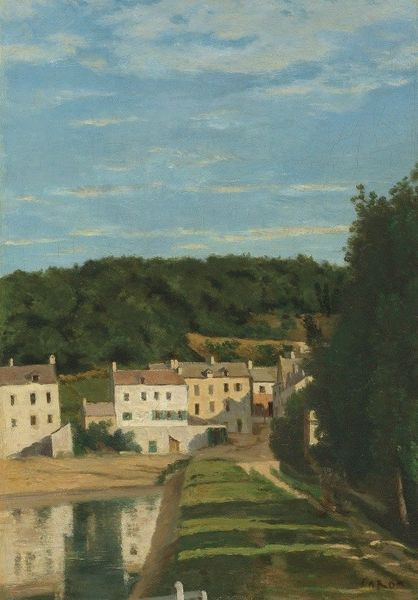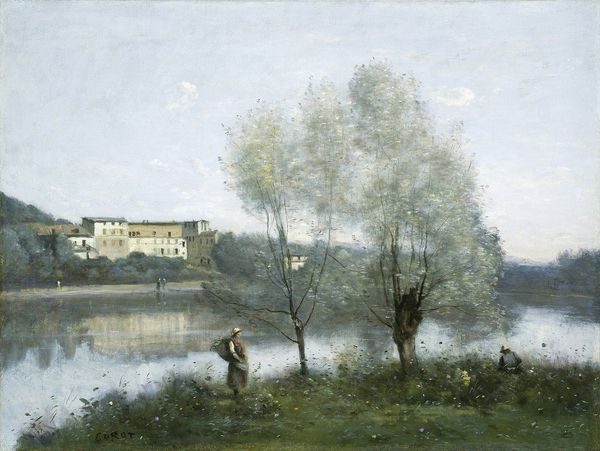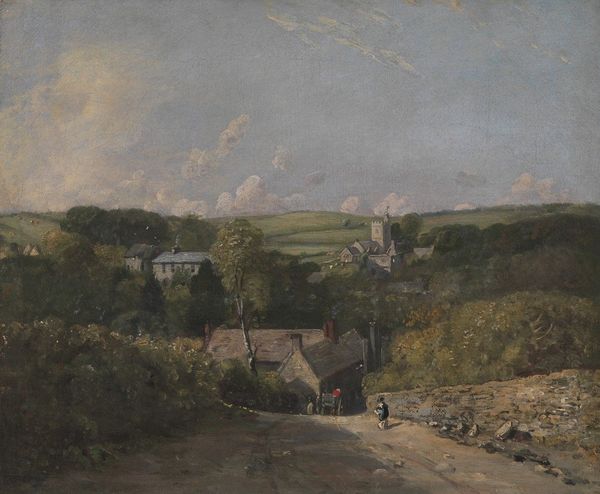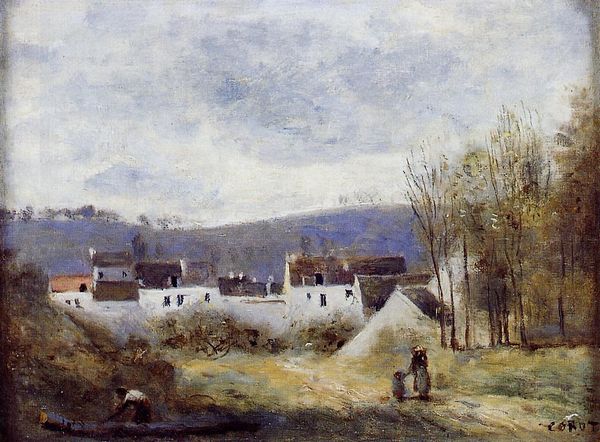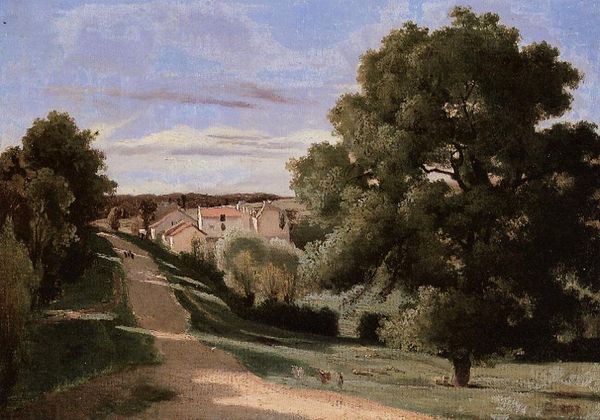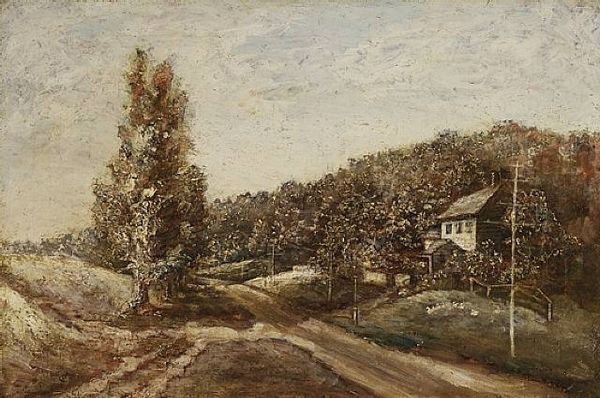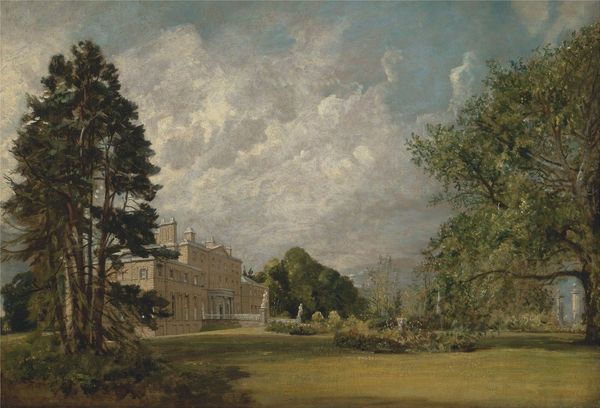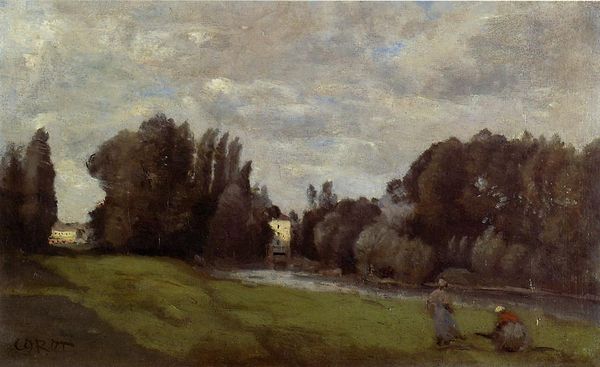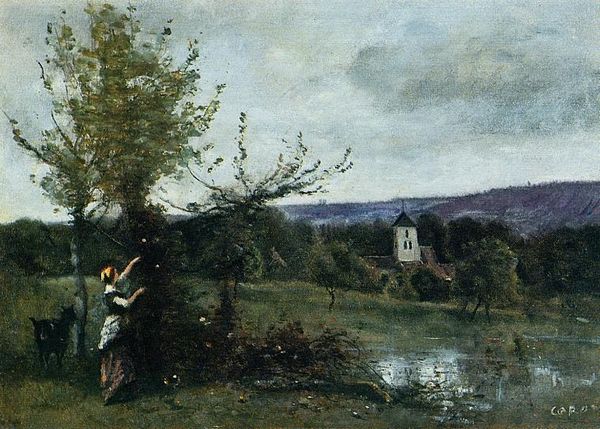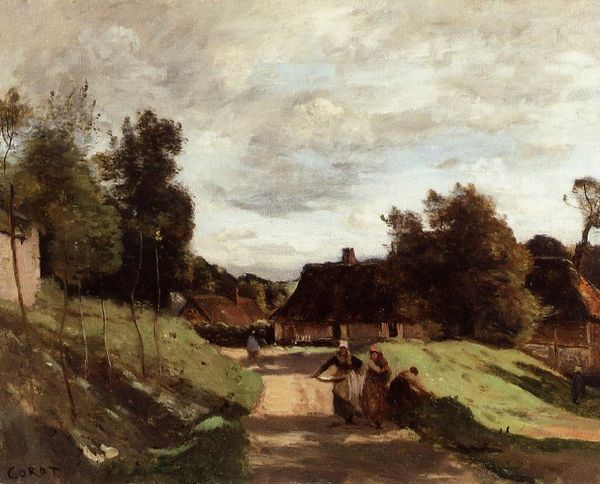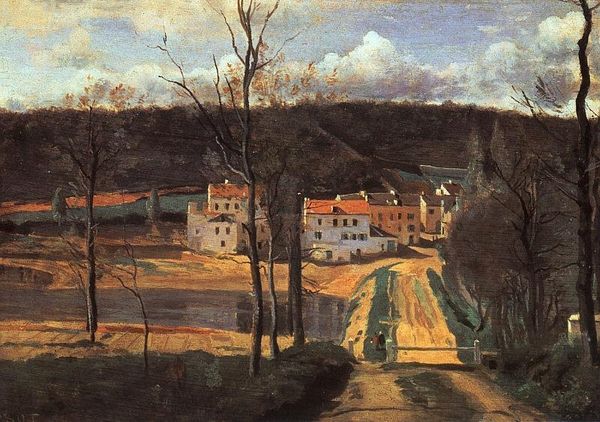
The Pond and the Cabassud Houses at Ville d'Avray 1860
0:00
0:00
jeanbaptistecamillecorot
Des Moines Art Center, Des Moines, IA, US
painting, plein-air, oil-paint
#
painting
#
impressionism
#
plein-air
#
oil-paint
#
landscape
#
house
#
oil painting
#
building
Copyright: Public domain
Curator: I'm struck by the melancholic stillness in Camille Corot's "The Pond and the Cabassud Houses at Ville d'Avray" from 1860. The hazy atmosphere almost muffles the scene. Editor: It certainly projects a quietude. Corot's loose brushwork seems to dematerialize the forms, blurring the line between reality and reverie, which is consistent with plein-air paintings that focuses on capturing an immersive sensory experience of nature. Curator: The subdued palette contributes to that effect, doesn't it? Note how the muted greens and grays dominate, punctuated only by the faintest hint of light reflecting off the water. It really accentuates the tonal qualities, which are subtle yet profound in constructing spatial depth. Editor: It's interesting to consider this piece within the historical context of landscape painting. Here, Corot depicts not a sublime, romanticized view of nature, but something far more intimate and accessible. It speaks to a shift in artistic patronage toward the rising bourgeoisie. He captures a sense of place, yes, but also a moment in social history. How do you see its role within impressionism? Curator: Its structural simplicity, focusing on capturing ephemeral light, places it as an early precursor, particularly in his reductive treatment of form, almost anticipating later minimalist landscapes. The composition guides the viewer's eye smoothly through the painting's layers: from the foreground figures, across the placid pond to the Cabassud houses nestled atop the small hill in the background. It establishes a dialogue between form and its setting, creating depth and rhythm within the scene. Editor: And the presence of those figures prompts an examination of Corot's engagement with nature as both a subject and a backdrop. It invites speculation about their relation to the land, their social standing. We might even ponder on the symbolic weight Corot attributes to modern life in relation to his aesthetic choices, thus prompting the emergence of modernity in art. Curator: True, but considering the materiality—oil paint on canvas—the effect is almost dreamlike, with blurry shapes emerging from the painted fabric. Editor: In this painting, Corot captured not only a scene but a turning point in how art engaged with the world and modernity. Curator: Ultimately, "The Pond and the Cabassud Houses" offers a compelling lesson in pictorial construction and emotive nuance.
Comments
No comments
Be the first to comment and join the conversation on the ultimate creative platform.
